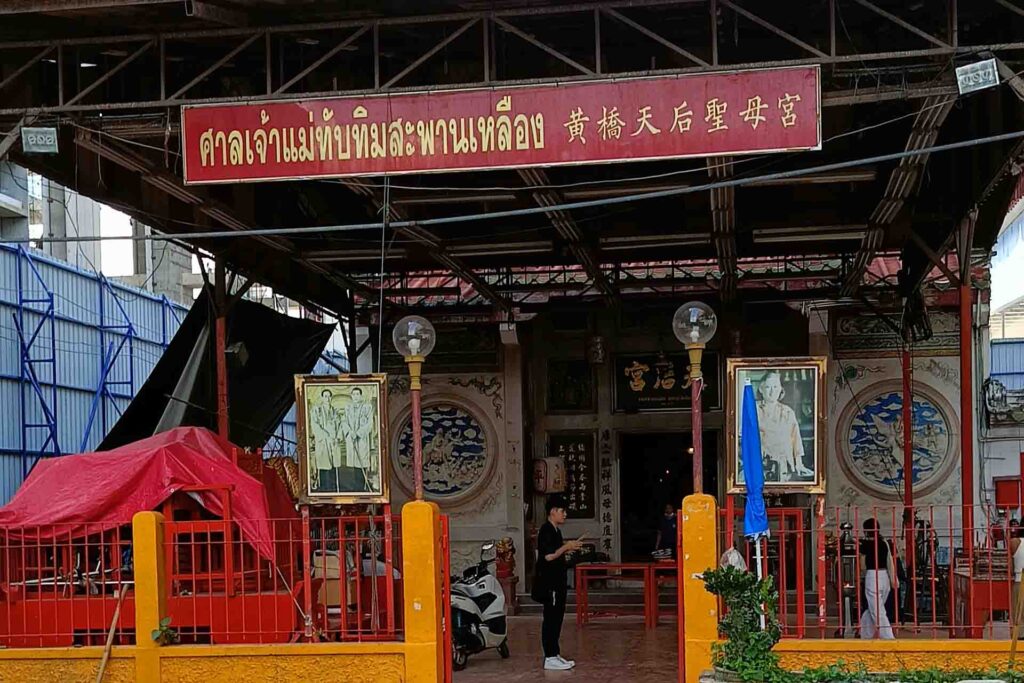Recently, Ticy Cityhttp://www.ticycity.com had the pleasure of chatting with Nai Mu about some inspiring stories featured in God’s City. One captivating tale centers around the Jao Mae Tubtim Shrine (Goddess Tuptim Shrine) at Saphan Lueang, which was also highlighted in the award-winning documentary The Last Breath of Samyan, now available on Netflix.
For those who haven’t seen it yet, Ticy City is excited to share Nai Mu’s beautifully written story about Goddess Tubtim of Saphan Lueang, a beloved protector whose presence has brought comfort and hope to the community for generations.

The Origins of the Goddess Tubtim Shrine
In the early days of King Chulalongkorn’s reign (Rama V), the Nai Joo Sae Tang family migrated from Ka Kie District in Teochew City, Guangdong Province, to Thailand. Nai Joo’s elder brother had already settled near the Bang Rak Canal. One day, he discovered a wooden carving of Goddess Tuptim floating in the water. Intrigued, he kept it, and when Nai Joo joined him in Thailand, he passed the carving to him.
Nai Joo had established a successful duck farm in Saphan Lueang and decided to build a small shrine to honor the goddess. As word spread, local residents began visiting the shrine to pay their respects, leading to its growth and expansion over the years.
Nai Joo later married Nang Ploy, a respected official at Sa Pathum Palace, and together they nurtured the shrine, making it a central part of the local culture.
A Legacy of Devotion
The legacy of the shrine continued with Nai Joo’s descendants, including Nai Boonchan (Leng Sae Tang) and later Nai Prachob and Nang Chao Ploy Sisai, who dedicated themselves to its care. Over time, the shrine became a cherished place of worship for students from Chulalongkorn University and the broader community. Even King Vajiravudh (Rama VI) honored the shrine, presenting a royal joss stick pot during the reign of King Chulalongkorn.
Today, the shrine remains a vibrant part of the Saphan Lueang area, where people come to seek blessings from Goddess Tubtim and other deities, including Pae Kong and Chae Leng Eia Kong (the Green Dragon).
The Many Names of Goddess Tuptim
Goddess Tuptim is known by various names throughout Thailand, including Mazu, Empress of Heaven, and Tai Nam Goddess. These titles reflect her divine nature and significance, particularly in communities located near rivers and waterways.
The Jao Mae Tubtim Shrine (Goddess Tuptim Shrine) at Saphan Lueang (Chula Soi 9) is one of many dedicated to her. Another notable shrine, located at Saphan Han in Pahurat, also honors Goddess Tuptim (known as Mazu). The shrine at the base of Sang Hi Bridge is dedicated to the Tai Nam Goddess (Ganges), another aspect of her divine presence.
A Life of Light and Wisdom
Born on Meizhou Island in Fujian Province, Goddess Tubtim—known as Mo in her early years—was a child of great wisdom and spiritual insight. From a young age, she displayed extraordinary abilities, including healing powers and a deep connection to nature. By age 15, her remarkable gifts and spiritual strength began to flourish.
She devoted her life to helping others, guiding sailors and fishermen, and bringing peace to her community. Her compassionate nature and wisdom earned her the title of Queen of Heaven. Even after her ascension, she is believed to continue watching over those who seek her blessings.
The legacy of Goddess Tubtim lives on through the countless lives she has touched, both in Thailand and beyond.
Let’s celebrate the Queen of Heaven, Jao Mae Tubtim of Saphan Lueang!